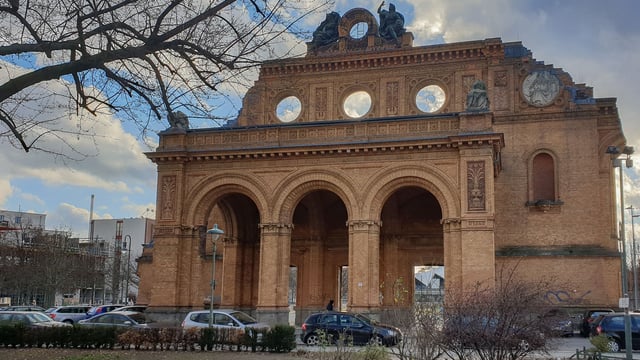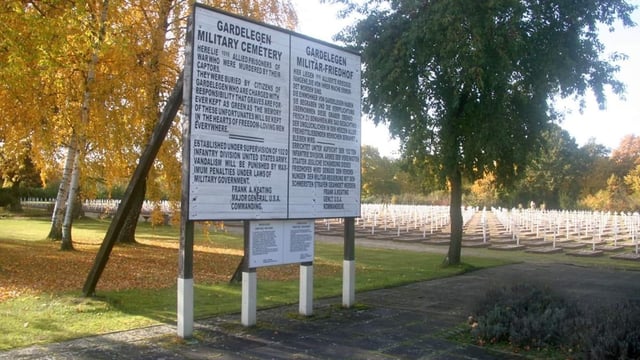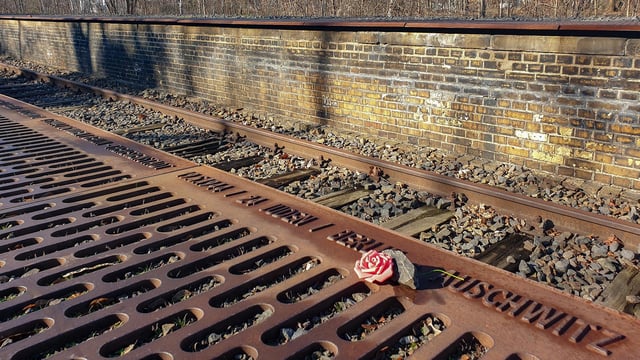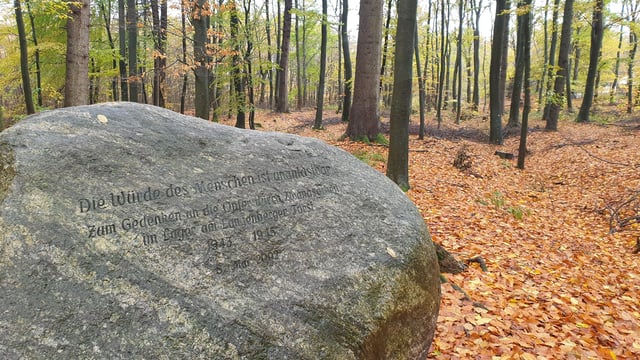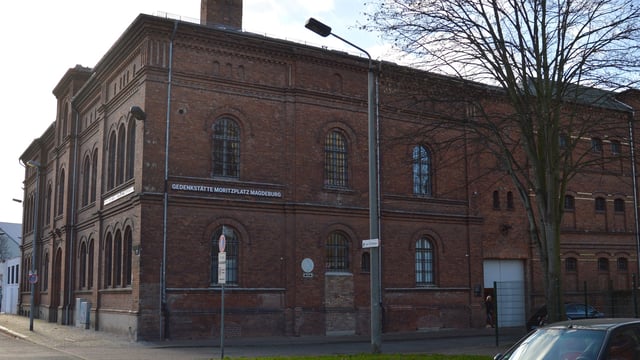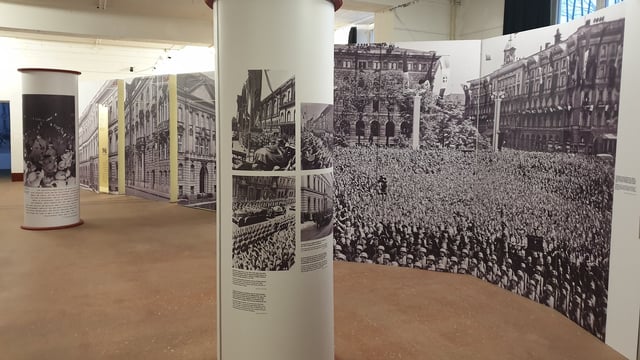Holocaust, WWII & the Third Reich in Germany
Anhalter Bahnhof
Inaugurated in 1841, Anhalter Bahnhof was one of Berlin’s most important train stations. And known as the Gateway to the South. During the Nazi era, it is estimated some 500,000 people fled the country from here. From 1942 to 1945 over 9,600 Jews were sent from here to Theresienstadt, Czechoslovakia. In the final months of Second World War the building was destroyed. A new museum telling the story of exile will open on this site in 2026.


Berlin Story Bunker
The WWII bunker on Schöneberger Straße near Anhalter Station was intended to shelter up to 3,000 commuters in the event of an air raid on Berlin. Today it houses the exhibition ‘Hitler – how could it happen’. With text, historic photographs and film, on three of the bunkers’ five levels, the rise of and demise of Hitler is documented in 40 separate displays. The exhibition has the only model of the Führerbunker. This self-guided tour takes between two and three hours.

Book Burning Memorial, Bebelplatz
Formerly known as Opernplatz (due to the State Opera), this public square had its name changed to Bebelplatz on 31 August in 1947 as a reminder of the Nazi book burnings that began here on the night of 6 May 1933, with the burning of books from the Institute for the Science of Sexuality library. A few nights later this event escalated into similar such actions in university towns around the country on 10 May 1933. An estimated 20,000 books were burned here. A plaque marks the site, as does the installation The Empty Library by Micha Ullman, where a glass plate has been set into the cobblestones that looks onto empty bookcases large enough to hold 20,000 book.

Bunker Valentin Memorial
On the north bank of the Weser River, not far from the river’s mouth, is the largest free-standing bunker from WWII in Germany. During World War II the bunker served as the German Navy’s submarine shipyard. It was still in use by the Navy until 1960. Thousands of people from all over Europe were put to work here. And over 1,100 people died here during the facility’s construction. In 2010 the city of Bremen decided to run the site as a memorial, opening to the public in 2015. An information trail of 25 stations tells the horrific story of the bunker. Guided tours available on Sundays.

Dachau Concentration Camp Memorial Site
The memorial site for the Dachau concentration camp was established in 1965. Initially intended for Hitler’s political prisoners, the camp in the medieval village of Dachau was set up in the grounds of an abandoned munitions factory in March 1933. Dachau would become a model for all other concentration camps as well as a school for SS men. American troops freed the survivors on April 29 1945. In the twelve years of its existence more than 200.000 people from all over Europe were imprisoned in Dachau and its 100 sub camps, of which some 41,500 were murdered. Immediately after the war the facility was used to house SS members waiting trial.

Documentation Center at Nazi Party Rally Grounds
In the north wing of the unfinished Nazi Congress Hall is the Documentation Centre, a museum that explores the history of the National Socialist’s part rallies held in Nuremberg from 1933 to 1938. The exhibition “Fascination and Terror”, which opened in 2001, closed at the end of 2020 and a new permanent exhibition is currently being constructed. While the Documentation Centre is undergoing refurbishment an interim exhibition has been staged: “Nuremberg – Site of the Nazi Party Rallies”. The remodelled museum is expected to open in 2025.

Dokumentation Obersalzberg
Close to the Austrian border, Dokumentation Obersalzberg is a museum that opened in 1999 to tell the story of the use of the mountainside retreat on Obersalzberg in the Berchtesgaden Alps by Nazi leaders, including Adolf Hitler. Hitler spent a lot of time at his home Berghof. The area was developed to accommodate the Nazi leadership, to serve as a remote location of the German Chancellery. The museum is currently in the final stages of a major redevelopment and it is hoped it will open gain in October 2023.

Eagle's Nest - Kehlsteinhaus
Completed in 1938, and run as a mountain restaurant since 1952, Kehlsteinhaus is an inn with a dark past. The location has spectacular views of the Berchtesgaden mountains towards Salzburg. But many people visit because of its history. It was built for the Nazis for government and social meetings. With the aid of text and historical photographs, a series of information panels tells the story of the site. The restaurant is closed in winter, and it is only possible to visit from May to October – weather conditions permitting. Access is only possible using a bus service that starts in the Obersalzberg car park.

Feldscheune Isenschnibbe Gardelegen Memorial
Due to the advancing American troops, at the beginning of April 1945 SS troops cleared the Hannover-Stöcken concentration camp and other subcamps. One group of prisoners were forced to march to a field barn on the outskirts of Gardelegen. They were locked in the barn, and it was set alight. The following day the crime scene was discovered by the Americans. An onsite cemetery was created for the victims of the massacre. Of the 1,016 victims only 305 could be identified. The first formal memorial was built in 1949.

Gleis 17 Memorial, Grunewald Station
The goods platform station of Grunewald S-Bahn is where an estimated 50,000 Jews from Berlin were transported to their death. From here, one of three deportation stations in Berlin, Jewish citizens were deported to labour and concentration camps in Riga, Warsaw, Auschwitz-Birkenau and Theresienstadt. Platform 17, or Gleis 17, has a metal installation that preserves the platform and records the dates of the departures, the number of people and their destinations.

Ladelund Concentration Camp Memorial
Some 2,000 prisoners from 12 different countries were held at a concentration camp just outside the village of Ladelund in the very north of Schleswig-Holstein. The prisoners were brought here in November 1944 to dig an anti-tank trench along the German-Danish border. During the six weeks the camp was open, 300 people died and are buried in the village cemetery. A documentation centre has been set up near the mass graves, from where you can take a short walk to see an excavated section of the trench, and the site of the camp.

Memorial and Museum Sachsenhausen
From 1936 to April 1945 Sachsenhausen was used by the Nazi regime as a concentration camp. It mainly held political prisoners, and a number of high profile individuals were interned here. Including the wife and children of the Crown Prince of Bavaria. The camp was equipped with a medical experimentation centre and a gas chamber, the remains of which can still be seen. After the war this area was in the Soviet Zone, and the camp was used by them to house enemies of the Soviet state from August 1945 to the spring of 1950 – Special Camp Nr. 7.

Memorial for the Victims of the Euthanasia
The State Hospital in Brandenburg an der Havel on Neuendorfer Str. was one of six centres in the country where the weak, ill and handicapped were killed, the so-called Euthanasia Action T4. Brandenburg’s hospital was the first of these killing centres because of its strategic position and ready infrastructure. In the first few months of 1940 some 9,000 vulnerable men, women and children were killed. Much of the site has been destroyed, one surviving building now houses municipal administrative offices, and a memorial centre is housed in an adjacent building.

Memorial to the Victims of Langenberger Forest Labour Camp
At the entrance to Langenberger Forest just outside of Leck is a large rock, with the inscription: “Human dignity is inviolable. In memory of the victims of forced labour in the Langenberger Forest Camp 1943 – 1945.” It was laid on 8 May 2002. The memorial is set between a two of a number of ditches, which were dug by inmates held at the nearby prisoner of war camp. These trenches were anti-tank ditches, thought to have been dug sometime in the first half of 1944 in anticipation of a land attack by the Allies. Nothing remains of the prisoner of war camp today.

Moritzplatz Memorial Magdeburg
Built in the first half of the 1870s, the Prussian district court and city prison on the north side of Moritzplatz continued to serve as a place of detention during WWII. Immediately after the war, the Soviets took control before East German law enforcement agencies, who continued to used the building as a detention centre until 1989. Today the historic court and prison stands as a memorial not only to the 10,000 plus victims of political persecution between 1945 and 1989, but also the victims held here by the Nazis. The memorial houses a permanent exhibition, “In the name of the people? About the judiciary in the SED state”.

Nazi Forced Labor Documentation Center, Berlin-Schöneweide
During WWII 12 million people from around Europe were forced to work in the German economy. Labouring and living under appalling conditions. They were housed in specially constructed camps of barracks. Only one such camp has survived in Berlin, in the south east of the city. Over 400 forced labourers from Italy were among the detainees here. Today the camp is a documentation centre on Nazi forced labour. Poignant and moving exhibitions tell the stories of the men and women incarcerated here and elsewhere in Berlin during the war.

Nazi Party Rally Grounds
For both symbolic and logistic reasons Nuremburg was chosen by the Nazis as the venue for their part rallies. A total of six rallies were held between 1933 and 1938. The site covered an area of 11 square km and vast structures were specifically build to glorify the leadership and the party. Some of these, such as the Congress Hall, were never completed before the war, others were damaged. But a number of landmarks remain. Part of the Congress Hall houses the Documentation Centre. From where it possible to start a self guided tour of the party grounds.

Nolde Museum Seebüll
Seebüll on the North Sea coast is the historic house of the well known, and controversial artist Emil Nolde. Begin your visit with a film about the life of the artist, that does not shy away from his association with the National Socialists and the Third Reich. Explore his house, which contains many of his paintings. Tour his beautifully maintained garden, in which he and his wife were laid to rest. From the museum hiking trails allow you to see more of the countryside he painted. Whatever you think of his art and his political associations during WWII, this is a fascinating experience.

Nuremberg Trials Memorium
Courtroom number 600, in the east wing of Nuremberg’s Palace of Justice is where the trials were held by the Allies against former members of the Nazi regime. Nuremberg was chosen partly for symbolic reasons, but also because the courthouse had a sufficiently large prison attached and most crucially was undamaged by Allied bombing. An exhibition outlines the history of the trials, and as Courtroom 600 is no longer used for trials it is possible to see that as part of your visit (if not being used for events).

Prora Documentation Centre
In what was one of the reception buildings of the Prora Seaside Resort for the Nazi organisation, is the recently founded museum that tells the story of this site. A permanent exhibition, MACHTUrlaub, using a wide variety of documents, photographs, historical film footage, contemporary artefacts and modern models, sets out the construction history of this the largest architectural project undertaken by the Nazis, as well as its social and political background. The centre also hosts temporary exhibitions from other such centres around Germany.




